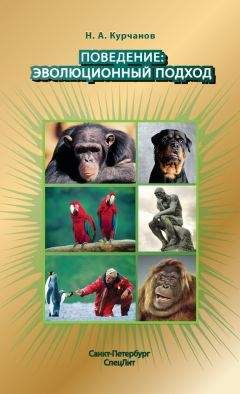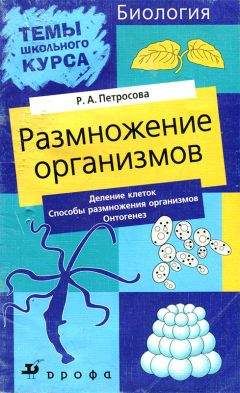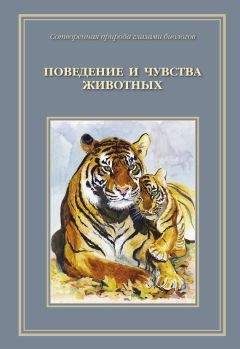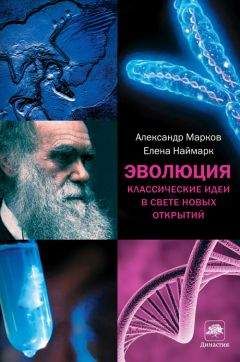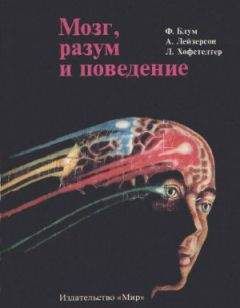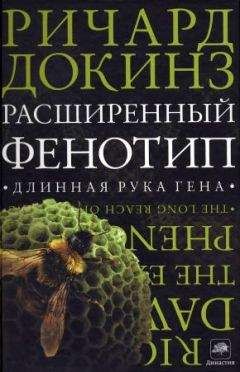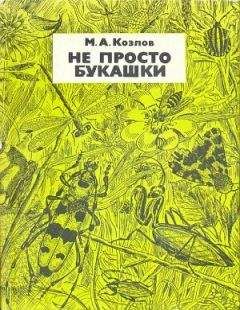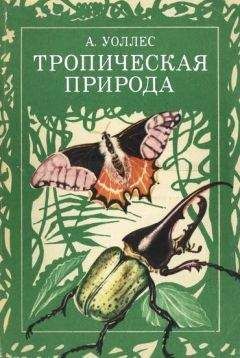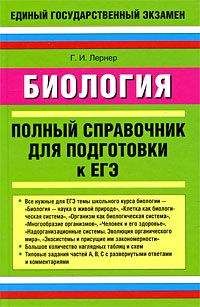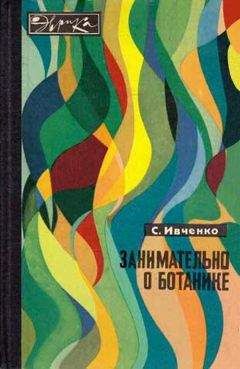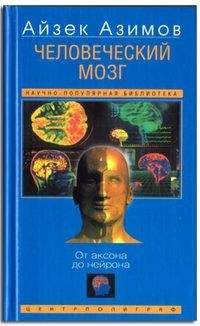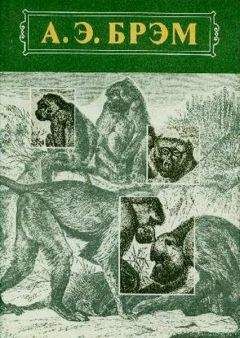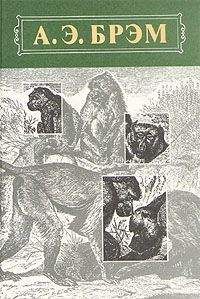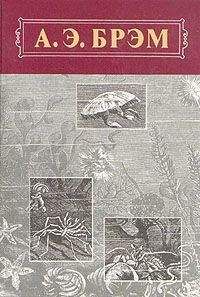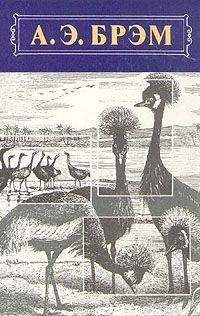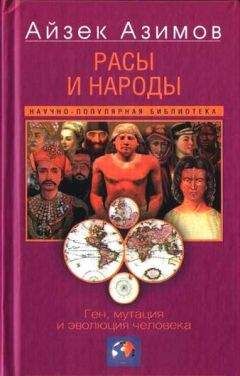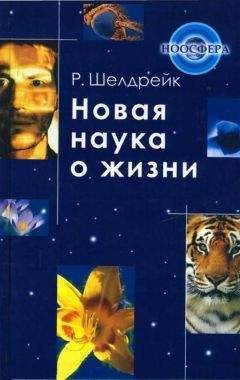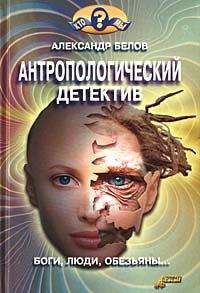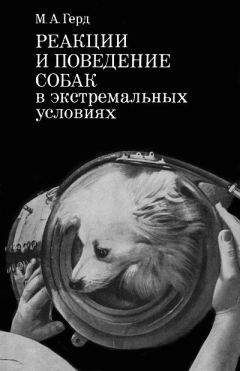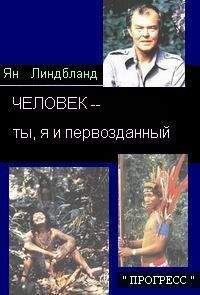Руперт Шелдрейк - Семь экспериментов, которые изменят мир
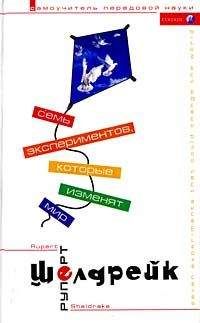
Скачивание начинается... Если скачивание не началось автоматически, пожалуйста нажмите на эту ссылку.
Жалоба
Напишите нам, и мы в срочном порядке примем меры.
Описание книги "Семь экспериментов, которые изменят мир"
Описание и краткое содержание "Семь экспериментов, которые изменят мир" читать бесплатно онлайн.
В середине 80-х годов XX века английский биолог Руперт Шелдрейк выдвинул революционную теорию морфогенетических полей. Согласно его гипотезе, все природные системы — от кристаллов до растений и животных, включая человека и весь человеческий социум, — обладают коллективной памятью, определяющей их поведение, строение и внешние формы. В своем новом бестселлере Шелдрейк продолжает развивать свои идеи, но в еще более доступной и увлекательной форме. Общность сознания, лежащая в основе его теории морфогенетических полей, помогает ему не только объяснять различные паранормальные явления, такие, как телепатия или телекинез, но и вовлекать читателя в увлекательные эксперименты, связывающие воедино теорию с практикой.
Hill, С 1985. Boomerang flying. Racing Pigeon Pictorial, 15:116–118.
Hindley, J., and С Rawson.1988. How Your Body Works. London: Usborne.
Но, M.W., С. Tucker, D. Keeley, and P.T. Saunders. 1983. Effects of successive generations of ether treatment on penetrance and expression of the Bithorax phenocopy in Drosophila melanogaster. Journal of Experimental Zoology, 225:357–368.
Hofstadter, D. R. 1979. Godel, Escher, Bach: A Metaphorical Fugue of Minds and Machines. Brighton: Harvester Press.
Holding, S.C., F.D. Stacey, and G.J. Tuck. 1986. Gravity in mines: An investigation of Newton's law. Physical Review, D33. 3487–3494.
Holding, S.C., and G. J. Tuck. 1984. A new mine determination of the Newtonian gravitational constant. Nature, 307:714—716.
Holldobler, В., and E.O. Wilson. 1990. The Ants. Berlin: Springer.
Holton, G. 1992. How to think about the «anti-science» phenomenon. Public Understanding of Science, 1:103–128.
Honorton, C. 1975. Has science developed the confidence to confront claims of the paranormal? In Research in Parapsychology, ed. by J.D. Morris et al. Metuchen, NJ.: Scarecrow Press.
Honorton, C, and W. Barksdale. 1972. PK performance with waking suggestions for muscle tension versus relaxation. Journal of the American Society for Psychical Research, 66:208–212.
Hubacher, J., and T. Moss. 1976. The «phantom leaf» effect as revealed through Kirlian photography. Psychoenergetic Systems 1:223–232.
Humphrey, N. 1983. Consciousness Regained: Chapters in the Development of Mind. Oxford: Oxford University Press.
Hutton, A.N. 1978. Pigeon Lore. London: Faber and Faber.
Huxley, F. 1990. The Eye: The Seer and the Seen. London: Thames and Hudson.
Inglis, B. 1986. The Hidden Power. London: Jonathan Cape. James, W. 1887. The consciousness of lost limbs. Proceedings of the American Society for Psychical Research, 1:249–258.
Kahn, F. 1949. The Secret of Life: The Human Machine and How It Works. London: Odhams.
Karagalla, S., and D. Kunz. 1989. The Chakras and the Human Energy Fields. Wheaton, 111: Quest Books.
Kayzer, W., ed. 1997. A Glorious Accident. New York: W. H. Freeman.
Keeton, W.T. 1972. Effects of magnets on pigeon homing. In Animal Orientation and Navigation, ed. by S.R. Galler et al. Washington, DC: NASA.
December, 1974. The-mystery of pigeon homing. Scientific American.
1981. Orientation and navigation of birds. In Animal Migration, ed. by D.J. Aidley. Society for Experimental Biology Seminar Series 13. Cambridge: Cambridge University Press.
Keller, E.F. 1985. Reflections on Gender and Science. New Haven: Yale University Press.
Kennedy, J.E., and J.L. Taddonio. 1976. Experimenter effects in parapsychological research. Journal of Parapsychology, 40:1—33.
Kestenbaum, D. 1998. Gravity measurement closes in on big G. Science, 282:2180–2181.
Kiepenheuer, J., M.F. Neumann, and H.G. Wallraff. 1993. Home-related and home-independent orientation of displaced pigeons with and without olfactory access to environmental air. Animal Behaviour, 45:169–182.
Kiernan, V. April 26, 1995. Gravitational constant is up in the air. New Scientist, 18.
Krippner, S. 1980. Human Possibilities: Mind Exploration in the USSR and Eastern Europe. New York: Doubleday.
Kuhn, T.S. 1970. The Structure of Scientific Revolutions, 2nd ed. Chicago: University of Chicago Press.
LaBerge, S. 1985. Lucid Dreaming. Los Angeles, Calif.: Tarcher.
Lewis, C.S. 1964. The Discarded Image. Cambridge: Cambridge University Press.
Lipp, H.P. 1983. Nocturnal homing in pigeons. Comparative Biochemistry and Physiology, 76A:743–749.
London, J. 1991. The Call of the Wild. London: Mammoth.
Long, W.J. 1919. How Animals Talk. New York: Harper.
Lorimer, D. 1984. Survival? Body, Mind and Death in the Light of Psychic Experience. London: Routledge and Kegan Paul. McFarland, D. 1981. Homing. In The Oxford Companion to Animal Behaviour, ed. by D. McFarland. Oxford: Oxford University Press.
Maddox, J. 1986. Turbulence assails fifth force. Nature, 323:665.
1988. The stimulation of the fifth force. Nature, 335:393.
Marais, E. 1973. The Soul of the White Ant. Harmondsworth: Penguin.
Marks, D. and J. Coiwell. September/October, 2000. The psychic staring effect: An artifact of pseudo-randomization. Skeptical Inquirer: 41–49.
Mastrandrea, M. 1991. The feeling of being stared at. Project report, Neuva Middle School, Hillsborough, Calif.
Matthews, G.V.T. 1968. Bird Navigation, 2d ed. Cambridge: Cambridge University Press.
Medawar, P. 1968. The Art of the Soluble. London: Methuen.
Melzack, R. 1989. Phantom limbs, the self and the brain. Canadian Psychology, 30:1—16.
— April, 1992. Phantom limbs. Scientific American:120–126.
Melzack, R., and P.R. Bromage. 1973. Experimental phantom limbs. Experimental Neurology, 39:261–269.
Mitchell, S.W. 1872. Injuries of Nerves and their Consequences. Philadelphia: Lippincott.
Monroe, R.A. 1973. Journeys Out of the Body. New York: Doubleday.
1985. Far Journeys. New York: Doubleday.
Moody, R.A. 1976. Life After Life. New York: Bantam.
Moore, B.R. 1988. Magnetic fields and orientation in homing pigeons: Experiments of the late W.T. Keeton. Proceedings of the National Academy of Sciences, USA, 85:4907–4909.
Moore, B.R., K.J. Stanhope, and D. Wilcox. 1987. Pigeons fail to detect low-frequency magnetic fields. Animal Learning and Behavior, 15:115–117.
Moritz, R.F.A., and E.F. Southwick. 1992. Bees as Super-organisms: An Evolutionary Reality. Berlin: Springer.
Murphy, J.J. 1873. Instinct: A mechanical analogy. Nature 7:483.
Murphy, M. 1992. The Future of the Body. Los Angeles, Calif.: Tarcher.
Noirot, С 1970. The nests of termites. In The Biology of Termites, vol. 2, ed. by K. Krishna and F.M. Weesner. New York: Academic Press.
Nuboer, W. 1996. A test of Sheidrake's morphic field theory. Internal Publication of the Helmholtz Institute, University of Utrecht, Holland.
Osman, A.H., and W.H. Osman. 1976. Pigeons in Two World Wars. London: Racing Pigeon Publishing Co.
Pagels, H. 1985. Perfect Symmetry. London: Michael Joseph.
Palmer, J. 1979. A community mail survey of psychic experiences. Journal of the American Society for Psychical Research 73:221–251.
Papi, F. 1982. Olfaction and homing in pigeons: Ten years of experiments. In Avian Navigation, ed. by F. Papi and H.G. Wallraff. Berlin: Springer
1986. Pigeon navigation: Solved problems and open questions. Monitore Zoologia Italiana (NS) 20:471–517.
1991. Olfactory navigation. In Orientation in Birds, ed. by P. Berthold. Basel: Birkhouser.
Papi, F., P. Ioale, P. Dall'Antonia, and S. Benvenuti. 1991. Homing strategies of pigeons investigated by clock shift and flight path reconstruction. Naturwissenschaften, 78370— 373.
Papi, F., W.T. Keeton, A.I. Brown, and S. Benvenuti. 1978. Do American and Italian pigeons rely on different homing mechanisms? Journal of Comparative Physiology 128:303–317.
Papi, F., P. Luschi, and P. Limonta. 1992. Orientation-disturbing magnetic treatment affects the pigeon opioid system. Journal of Experimental Biology, 166:169–179.
Parker, R.L., and M.A. Zumberge. 1989. An analysis of geophysical experiments to test Newton's law of gravity. Nature, 342:29–32.
Peterson, D. 1978. Through the looking glass: An investigation of the faculty of extra-sensory detection of being stared at. Masters thesis, Department of Psychology, University of Edinburgh.
Petley, B.W. 1985. The Fundamental Physical Constants and the Frontiers of Metrology. Bristol: Adam Hilger.
Piaget, J. 1973. The Child's Conception of the World. London: Granada.
Poeck, K., and B. Orgass. 1971. The concept of the body schema: A critical review and some experimental results. Cortex, 7:254–277.
Pogge, R.C. 1963. The toxic placebo. Medical Times, 91:773–781.
Poortman, J.J. 1959. The feeling of being stared at. Journal of the Society for Psychical Research, 40:4—12.
Popper, K. 1959. The Logic of Scientific Discovery. London: Hutchinson.
Popper, K., and J. Eccles. 1977. The Self and its Brain. Berlin: Springer.
Pratt, J.G. 1953. The homing problem in pigeons. Journal of Parapsychology, 17:34–60.
1956. Testing for an ESP factor in pigeon homing. Ciba Foundation Symposium on Extrasensory Perception. Ciba Foundation, London.
Prigogine, I., and I. Stengers. 1984. Order Out of Chaos. Heinemann: London. Quinn, T. 2000. Measuring big G. Nature 408:919–920.
Reasenberg, K.D. 1983. The constancy of G and other gravitational experiments. Philosophical Transactions of the Royal Society, A310:227–238.
Reber, A.S. 1985. The Penguin Dictionary of Psychology. Harmondsworth: Penguin.
Rhine, J.B. 1934. Extrasensory Perception. Boston: Boston Society for Psychical Research.
— 1951. The present outlook on the question of psi in animals. Journal of Parapsychology, 15:230–251.
Rhine, J.B., and S.R. Feather. 1962. The study of cases of «psitrailing» in animals. Journal of Parapsychology, 26:1 — 22.
Robinson, G.E. 1993. Colonial rule. Nature 362:126.
Rosenthal, R. 1976. Experimenter Effects in Behavioral Research. New York: John Wiley.
1984. Interpersonal expectancy effects and psi: Some commonalties and differences. New Ideas in Psychology, 2:47–50.
1991. Teacher expectancy effects: A brief update 25 years after the Pygmalion experiment. Journal of Research in Education, 1:3—12.
Rosenthal, R. and D. B. Rubin. 1978. Interpersonal expectancy effects: The first 345 studies. Behavioral and Brain Sciences, 3:377–415.
Sacks, O. 1985. The Man Who Mistook his Wife for a Hat. London: Duckworth.
Schietecat, G. 1990. Pigeons and the weather. The Natural Winning Ways, 10:13–22.
Schlitz, M. and S. LaBerge. 1994. Autonomic detection of remote observation: Two conceptual replications. Proceedings of Presented Papers, Parapsychology Association 37th Annual Convention, Amsterdam: 352–360.
— 1997. Covert observation increases skin conductance in subjects unaware of when they are being observed: A replication. Journal of Parapsychology, 61:185–195.
Schmidt, H.S. 1973. PK tests with a high-speed random number generator. Journal of Parapsychology, 37:115–118.
— 1974. Comparison of PK action on two different random number generators. Journal of Parapsychology, 38:47–55.
Schmidt-Koenig, К. 1979. Avian Orientation and Navigation. London: Academic Press.
— 1987. Bird navigation: Has olfactory orientation solved the problem? Quarterly Review of Biology, 62:33—47
Schmidt-Koenig, K., and J.U. Ganzhorn. 1991. On the problem of bird navigation. In Perspectives in Ethology, vol.9, ed. by P.P.G. Bateson and P. H. New York: Klopfer.
Schmidt-Koenig, K., and H.J. Schlichte. 1972. Homing in pigeons with impaired vision. Proceedings of the National Academy of Sciences, USA, 69:2446—2447
Schwarz, J.P., D.S. Robertson, T.M. Niebauer, and J.E. Faller.
1998. A free-fall determination of the Newtonian constant of gravity. Science, 282:2230–2234.
Schweiger, A., and A. Parducci. 1978. Placebo in reverse. Brain/Mind Bulletin 3, no. 23:1. Seeley, T. D. 1989. The honey bee colony as superorganism. American Scientist, 77:546–553. Seeley, T.D., and R.A. Levien. 1987. A colony of mind: The beehive as thinking machine. The Sciences, 27:38–43.
Serpell, J. 1986. In the Company of Animals. Oxford: Basil Blackwell.
Shapiro, A.K. 1970. Placebo effect in psychotherapy and psychoanalysis. Journal of Clinical Pharmacology, 10:73–77.
Sheldrake, R. 1981. Л New Science of Life: The Hypothesis of Formative Causation. London: Blond and Briggs.
1988. The Presence of the Past: Morphic Resonance and the Habits of Nature. London: Collins.
1990. The Rebirth of Nature: The Greening of Science and God. London: Century.
May/June 1998. Could experimenter effects occur in the physical and biological sciences? Skeptica Inquirer, 57–58.
1998. Experimenter effects in scientific research: How widely are they neglected? Journal of Scientific Exploration, 12:73–78.
1998. The sense of being stared at: Experiments in schools. Journal of the Society for Psychica Research, 62:311–323.
1999. Commentary on a paper by Wiseman, Smith, and Milton on the «psychic pet» phenomenon. Journa of the Society for Psychical Research, 63:306–311.
1999. Dogs That Know When Their Owners Are Coming Home, and Other Unexplained Powers of Animals. London: Hutchinson.
1999. How widely is blind assessment used in scientific research? Alternative Therapies, 5:88–91.
1999. The sense of being stared at' confirmed by simple experiments. Biology Forum, 92:53–76.
Подписывайтесь на наши страницы в социальных сетях.
Будьте в курсе последних книжных новинок, комментируйте, обсуждайте. Мы ждём Вас!
Похожие книги на "Семь экспериментов, которые изменят мир"
Книги похожие на "Семь экспериментов, которые изменят мир" читать онлайн или скачать бесплатно полные версии.
Мы рекомендуем Вам зарегистрироваться либо войти на сайт под своим именем.
Отзывы о "Руперт Шелдрейк - Семь экспериментов, которые изменят мир"
Отзывы читателей о книге "Семь экспериментов, которые изменят мир", комментарии и мнения людей о произведении.





